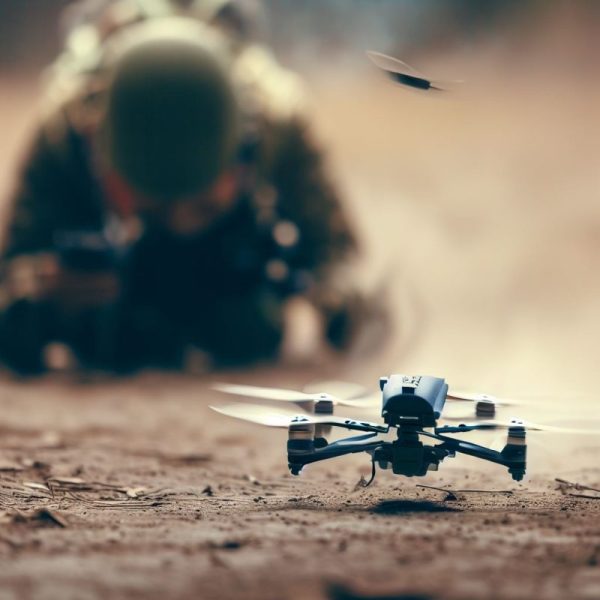The Sudanese armed forces have begun operating improvised kamikaze drones, very likely based on commercial-off-the-shelf (COTS) UAVs. The drones appear to be FPV quadcopter-type drones.
The kamikaze drones were used against forces of the Rapid Support Force (RSF). In June, Sudan’s military began an offensive against the paramilitary Rapid Support Force (RSF). This offensive aims to retake key areas that were under the control of the RSF, a powerful and controversial paramilitary group in the country.
Loitering munitions, also known as kamikaze drones or suicide drones, are an emerging weapon system that has gained popularity in recent years due to their unique capabilities. Loitering munitions are unmanned aerial vehicles (UAVs) that can hover over an area for an extended period of time, using advanced sensors to identify and track targets. Once a target is located, the loitering munition can then be directed to fly directly into the target, destroying it in a highly precise and targeted manner.
The use of loitering munitions has become increasingly popular in military conflicts around the world, with several countries investing heavily in the development of these systems. One of the main advantages of loitering munitions is their ability to provide enhanced strike capabilities, allowing forces to engage targets with precision and accuracy from long ranges. This makes them an attractive option for African forces that are often faced with asymmetric warfare and have limited resources to devote to expensive and sophisticated weapon systems.
It is not certain the exact type kamikaze drones in use, however, earlier this year, Sudan’s Military Industry Corporation (MIC) launched its indigenous Kamin-25 loitering munition designed to be launched from an unmanned aerial vehicle (UAV). The Kamin-25 loitering munition was unveiled during the IDEX 2023 show recently held in Abu Dhabi.
The lotering munition is currently being tested by the Sudanese Air Force on Z3-M UAVs, with final acceptance tests scheduled for May. Two Kamin-25s can be carried by the Z3-M with their wings rotated 90° along their bodies until they are released.
The Kamin-25 loitering munition can be fitted with either a 5 kg anti-tank warhead or a 7 kg anti-personnel warhead. With a total weight of 25 kg, loitering munitions can provide a cost-effective means of enhancing military capabilities. Compared to traditional manned aircraft or ground-based systems, loitering munitions are relatively inexpensive to operate and maintain. This makes them an attractive option for African forces that have limited resources to devote to expensive weapon systems.
Sudan also operates a number of larger UAVs for surveillance and precision strike including Mohajer-6, -4 and -2 UAVs made by Iran’s Quds Air Industries, Zagil-3, Ababil-3, and -2 UAVs also made by Iran’s HESA, and Chinese-made Rainbow CH-3, -4 UCAVs.
The development of indigenous loitering munitions by Sudan is a significant development in the African defense landscape. It demonstrates Sudan’s growing commitment to developing its own domestic defense capabilities, and it could have far-reaching implications for the future of warfare in Africa.
Loitering munitions are highly versatile and can be used for a variety of purposes, including surveillance, reconnaissance, attack, and electronic warfare. They can also be used to target a wide range of targets, including ground troops, armored vehicles, and aircraft.
The development of indigenous loitering munitions by Sudan could give the country a significant military advantage over its adversary the Rapid Support Force. It could also lead to the proliferation of these weapons to other African countries, which could have a destabilizing effect on the region.
Overall, the development of indigenous loitering munitions by Sudan is a significant development that is likely to have a major impact on the future of warfare in Africa.
Meanwhile, the RSF have their own inventory of unique drones which they use in combat. This June, a peculiar military VTOL drone drone armed with two 120mm mortar rounds was shot down by the Sudanese armed forces. The type have been seen in several conflict across the Middle East and Africa over the years.
Although the exact drone type that forms the basis for the UCAV design is as of yet unknown, they are identical in design to two UCAVs that were shot down by Houthi forces in Yemen in 2020.
The RSF operates some form of air defence system which was either given to them by Russian Wagner forces or from other sources like the UAE.
However, the air defence system which may likely be man portable (MANPAD), or other short range air defence system is not able to track and target this small drones.
